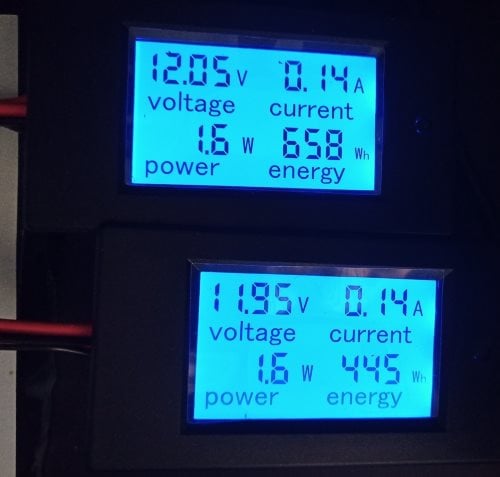My suspicion is that the inline power meter, an Aliexpress one, is pulling down the output voltage when under load, which is why it's not measurable with a DMM. Or at least that's the only explanation I can still think of for why close to 1V is vanishing between the power supply and the device being powered.
Does anyone else have any ideas?





